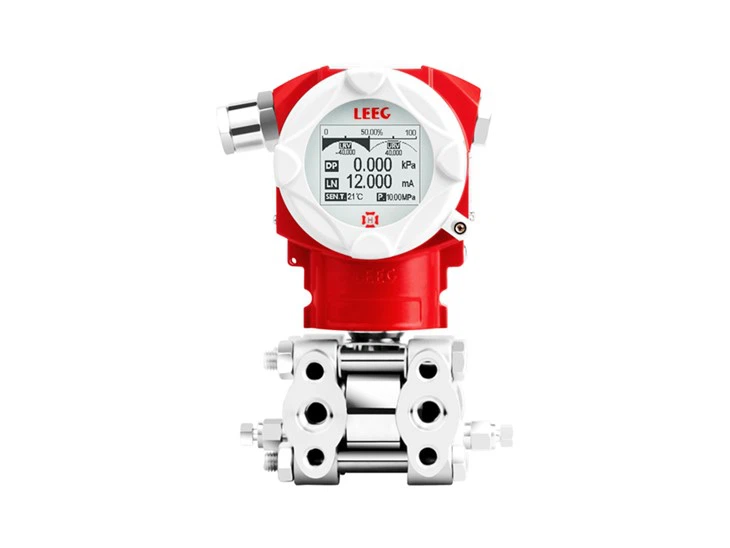Tank pressure sensors and transmitters serve various purposes across different industries, primarily in the use, storage, and transportation of industrial liquids. These sensors and transmitters enable real-time monitoring of tanks to ensure safe operation. Tanks come in diverse types, including vertical tanks, horizontal tanks, and specially shaped tanks. They can also be categorized by material: metallic (e.g., 316 stainless steel, steel-lined plastic) and non-metallic (e.g., fiberglass, rubber). Based on capacity, they can be classified into small tanks (used in gas stations), medium-sized tanks (for satellite liquefaction systems), large tanks (common in production facilities), and extra-large tanks (primarily for LNG receiving terminals). Tanks store chemicals such as acids, alkalis, alcohols, gases, and refined liquid substances. LEEG Instruments' tank pressure sensors and transmitters are compatible with various media to ensure safe, stable, precise, and efficient operation.
Petroleum & Petrochemical Storage Tank
Petroleum is a fundamental raw material in Industry 4.0 and a cornerstone of daily life and the global economy. Crude oil, diesel, gasoline, kerosene, aviation fuel, lubricants, and asphalt are the lifeblood of the industrial era. Monitoring pressure and liquid levels in petroleum and petrochemical storage tanks requires high reliability and stability. Our monocrystalline silicon pressure sensors and transmitters hold multiple international certifications, including ATEX, IECEx, and CSA.
Liquefied Gas Storage Tank
Liquefied gases mainly include liquefied petroleum gas (LPG: propane, butane), liquefied natural gas (LNG), liquid ammonia, liquid oxygen (LOX), liquid nitrogen (LIN), and liquid argon (LAR). For liquefied gas storage tanks, monitoring focuses on temperature, pressure, and liquid level to prevent rapid pressure increases due to rising temperatures. Liquefied gas tank pressure sensors require high precision, long-term stability, and explosion-proof certification to ensure safe operation, improve production efficiency, and reduce labor costs.
Chemical Storage Tank
Chemical storage tanks typically contain corrosive or toxic substances. Accurate monitoring of pressure, liquid level, and temperature is critical for safe production, environmental protection, and automated control. LEEG Instruments employs corrosion-resistant materials and processes such as tantalum, Hastelloy C, and PTFE coating, along with fully welded structures and O-ring seals to prevent leakage. Gold-plated diaphragms and diamond coatings provide additional protection, ensuring safe monitoring for chemical storage tanks.
Food & Pharmaceutical Storage Tank
Food and pharmaceutical storage tanks demand high precision and material safety. Pressure sensors and transmitters must meet special requirements such as sterility, easy cleaning, corrosion resistance, and hygienic oil filling. Typical media include liquid storage tanks, fermentation and brewing tanks, culture media, enzymes, and biological samples. LEEG sanitary pressure transmitters comply with 3A and EHEDG hygiene standards, ensuring product quality, safety, and regulatory compliance.
Water & Wastewater Storage Tank
Water and wastewater storage tanks are primarily used in municipal, industrial, and environmental applications, storing liquids such as fresh water, sewage, rainwater, recycled water, and seawater. Due to variations in water quality and environmental conditions, these tanks require diverse monitoring solutions. For instance, clean water tanks must meet hygiene standards, sewage tanks need anti-clogging measures, and seawater tanks must withstand salt spray and fouling. To ensure operational safety, LEEG Instruments offers solutions with 316L stainless steel, titanium, and PTFE coating, with protection ratings of IP67-IP68, and measurement methods including differential and static pressure.
Solutions for Tank Pressure Sensors and Transmitters

Key Considerations for Selecting Tank Pressure Sensors and Transmitters
1. Measured Medium
2. Range and Accuracy
3. Environmental Suitability
4. Output Signal and Communication
5. Installation Method
Installation Guidelines for Tank Pressure Sensors and Transmitters
1. Installation Position:
- Avoid vortex and bubble zones; maintain a distance >1/6 of the tank diameter from the wall.
- For liquid level measurement, prevent gas accumulation; install the high-pressure side downward.
2. Sealing & Protection:
- Use fully welded structures for corrosive environments to prevent O-ring degradation and leaks.
- Outdoor applications require IP67/IP68 protection ratings.
3. Electrical Safety:
- Intrinsically safe circuits must be paired with safety barriers; follow grounding standards in explosive areas.
- Shield signal cables against electromagnetic interference with single-end grounding.




















